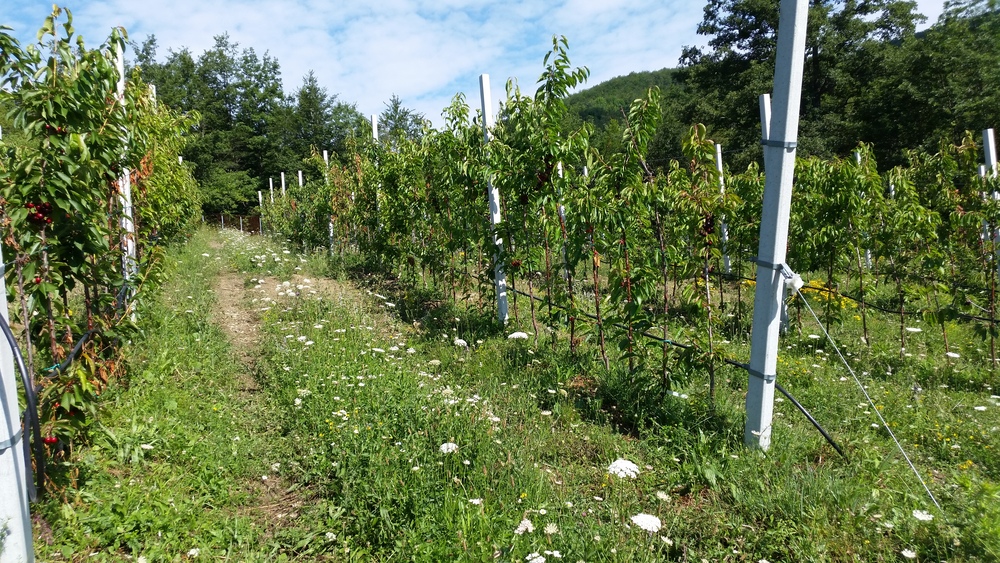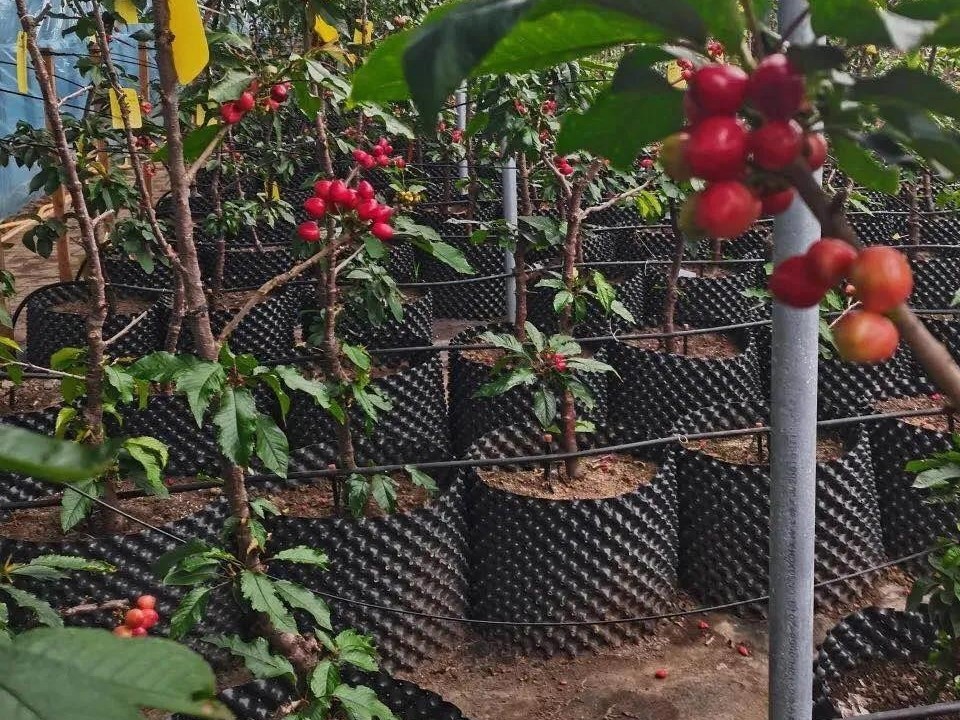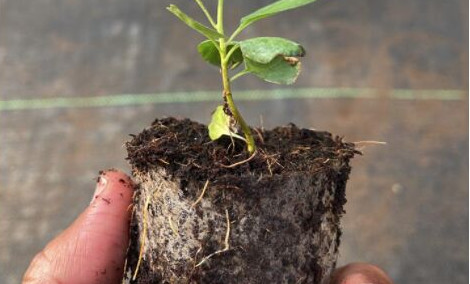
Stefano Lugli - SL Fruit Service
Coordinatore comitato tecnico-scientifico
When you have a strong passion for your work sometimes a little effort is enough to achieve great results. Cherry Times is pleased to publish Stefano Lugli's interview with Luis Lasarte, Catania's dad.
How did your passion for fruit growing come about?
Mainly because of my family and later because of my training as an agricultural engineer. I was born in La Almunia de De Godina, very close to Zaragoza, in the Ebro Valley. My family has been involved in fruit farming for several generations and from an early age, fruit farming was a discovery and enthusiasm for me.
While many of my friends hated going to the farmland, I loved my land. Later, at university, I was lucky enough to have excellent professors and colleagues who continued to fuel my desire for innovation.
Your fondness for cherries prompted her to start a cherry tree genetic improvement project. How did this idea come about?
Of all the fruits grown in my area, the cherry is the most intriguing and also the most complicated. Therefore, innovating in this area has made my business even more challenging and interesting. The cherry varieties available 30 years ago came from very diverse areas around the world (California, Canada, Italy, France and Central Europe) but very few of them were perfectly adapted to the climatic conditions in my area.
Those that had good quality were very susceptible to cracking. Others were more tolerant but of poor quality. Crossing them and looking for 'hybrid vigour' was one of the ideas and concerns I had 15 years ago. I was looking for early or mid-season varieties adapted to the Ebro valley, with good fruit quality and tolerance to cracking. Hence this mini-project, which I call hobby, was born.

There are many new and interesting cherry varieties on the market. What remains to be improved and what are the goals of your project?
It is true that many new varieties appear lately, but I insist again, some varieties work well in their place of origin, but when you take them out in other conditions, the characteristics can change dramatically. At other times, there is a lot of pressure from publishers, nurserymen and the industry itself. In my case, I prefer to go slower.
The targets I look for are early or mid-season varieties, adapted to a production zone that is not very early but not very late, like mine. I try to obtain varieties with high quality fruit, especially of large size, a good sugar-acidity balance, consistent and tolerant to cracking.
Good offspring require good parents. Which varieties do you use in your crosses?
It is true that to have good offspring you need good parents. I am not a genetics super-expert, but my experience over the past 15 years has helped me to realise that working in cherry breeding is quite complicated. When you cross two varieties, the genetic variability is enormous and you don't have a clear view of the expected results, otherwise everyone would do it.
Although I don't believe in luck, in my case good luck can help. I always use a parent that brings me quality and another parent that can give me hardiness and split tolerance, I usually use sour varieties as a source of resistance and not necessarily good quality. Although I do not believe in luck, in this case it can help.
Do you use any modern genetic technology in your work as a breeder?
My work is very slow, I don't use big embryo breeding technologies or molecular markers that would shorten my breeding evaluation deadlines by a couple of years. I choose the parents, extract pollen from one of them, demasculate the flowers and pollinate manually, extract the seed, stratify and plant. Then I wait 3-4 years to see the fruits and start selecting.
It is very slow work, but when you see your first fruits, it is an explosion of excitement, although sometimes it is a little frustrating because only very few of them become interesting selections.
You recently licenced the Catania variety. Let's discover its main characteristics together.
The variety is very productive, is not self-fertile and has an S3 S4 allelic profile. On average, annual yields of around 14 t/ha are obtained. The tree's habit is semi-open and it does not have any major problems of management in conduction or any particular sensitivity to diseases. Catania's fruit is large (32-34 mm), firm (72-80 Durofel), sweet (20ºBrix) and slightly acidic, a quality that gives it good tolerance to cracking and good storage.
So Catania is resistant to cracking?
Catania appears to be very tolerant to cracking, but I would like to make a clarification: at no time am I saying that Catania is resistant to cracking, but I can confirm that during the 5-6 years that we have been observing it in production, Catania has behaved much better to the problems caused by rain than other varieties of the same harvest period.
Furthermore, as all cherry growers know, apart from genetic predisposition, the incidence of cracking is influenced by many other factors, mainly the intensity and duration of the rainfall, the time of fruit development and the productive load of the tree.
Catania is described as a medium-early variety (Sweet Lorenz / Red Pacific period). What is the optimal time for harvesting?
The ideal maturity date is close to Santina and the optimal harvest colour for the CTIFL code should be between 5 and 6, depending on the type of target market.
New high-density cherry plantations with dwarfing or half-dwarfing rootstocks are spreading all over the world. Is Catania a suitable variety for these planting systems?
The plantations in my area are planted with low Spanish pot or KGB, with a density of 700-900 plants per hectare. With these two systems Catania works very well, but I do not know the adaptation to other planting forms and densities.
Every variety has strengths and weaknesses. Can you tell us what Catania's weak points are?
I could tell you that since Catania is a relatively new variety and only tested in my area, it could perhaps be adapted differently in other production areas. For example, given the general characteristics observed on Catania and those of its parents, I do not think the variety can adapt well in extra-early areas, areas where varieties with low cold requirements have been planted lately.
Another piece of information I can provide, from this year, is that in many varieties, including Catania, there was damage to the epidermis caused by the strong winds at colouring 2-3, although it is true that at its optimum harvest point 5-6 this damage was quite hidden. In orchards with hail covers and windbreaks the problems were minimal.
The market demands big, firm, good-looking cherries. But to be successful, a new variety must also have good post-harvest behaviour. How does Catania behave?
Good post-harvest behaviour was not one of my goals in my initial project, because I do the marketing with the Cosanse Cooperative and our markets are the national market and Europe. In these cases, one week of transport works very well, as does the following week for marketing: the cherry is perfect.
The slight acidity of the fruit helps good storage. For longer periods, as is done in Chile for the Asian market, I do not know its evolution. Regarding the aptitude of the variety to be selected, graded and packed with the new post-harvest technologies, I can assure you that Catania is perfectly adapted to these processing lines.
I imagine that many producers are interested in investing in the Catania variety. How is the commercialisation of the variety going in Europe and worldwide?
Patent protection and variety development, nursery production and commercialisation of the plants are done exclusively by Viveros Verón in Spain and Europe. In Chile, the process started with ANA. The variety is marketed mainly with SL64 and Adara rootstocks.
Besides Catania, are there any promising new selections that might emerge from your genetic improvement project?

This year it is very likely that a few more varieties already selected and ready for registration will be incorporated. Always with the same line I commented on, fruit quality, great size and cracking tolerance.
Thank you Luis and good work!
Cherry Times - All rights reserved













